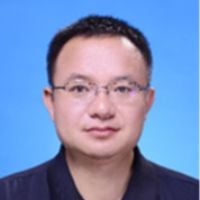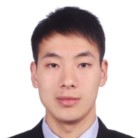Indicator Minerals, Vectoring and Fertility Tools for the Exploration of Porphyry Cu (Mo ± Au) Systems
A special issue of Minerals (ISSN 2075-163X). This special issue belongs to the section "Mineral Exploration Methods and Applications".
Deadline for manuscript submissions: 31 August 2024 | Viewed by 2086
Special Issue Editors
Interests: metallogeny; exploration; porphyry copper system; economic geology
Interests: porphyry deposits; geochemistry; petrology
Special Issues, Collections and Topics in MDPI journals
Interests: economic geology; regional geological survey; porphyry copper deposits
Interests: magmatic-hydrothermal mineralization; resource exploration and evaluation; tectono-magmatic evolution of the CAOB and Tethys
Special Issue Information
Dear Colleagues,
As one of most important deposit types, porphyry Cu systems are defined as large volumes of hydrothermally altered rock centered on porphyry that may also contain skarn, carbonate-replacement, sediment-hosted, and high- and intermediate-sulfidation epithermal base and precious metal mineralization. It supplies nearly 75% of the world’s Cu, 50% the Mo, perhaps 25% of the Au, most of the Re, and minor amounts of other metals (Ag, Pd, Te, Se, Bi, Zn, and Pb).
In the past several decades, China has invested heavily in the geologic surveying and mineral exploration of porphyry copper systems. These efforts have resulted in the discovery of numerous important porphyry Cu (Mo±Au) deposits (Qulong, Jiama, Xiongcun, Duolong, Tuwu, Pulang etc.). Moreover, many significant research efforts have been devoted to new technology (LA-ICP-MS, SIMS, SHRIMP, SWIR spectrometry etc.) or methods (indicator minerals, vectoring tools) to assist the exploration of porphyry Cu systems.
These activities has been divided into two projects: (1) indicator minerals (IMs), which aims to identify the presence of, or potential for, porphyry-style mineralization based on the chemistry of magmatic or hydrothermal minerals such as plagioclase, zircon and apatite, magnetite, biotite, scheelite etc. and (2) vectoring and fertility tools (VFTs), which use the chemical compositions of hydrothermal minerals such as epidote, chlorite and alunite, as well as garnet to predict the likely direction and distance to mineralized centers in porphyry copper systems.
This Special Issue is organized into three sections:
- Section 1 Metallogeny of porphyry Cu (Mo±Au) deposits: Geology, geochronology, and mechanism for Cu (Mo±Au) deposits in different tectonic settings or metallogenic belts.
- Section 2 Indicator minerals of porphyry Cu (Mo±Au) systems: Case studies of indicator minerals to reveal their implications for the fertility of ore-related porphyries and differences with barren porphyries.
- Section 3 Vectoring and fertility tools of porphyry Cu (Mo±Au) systems: Case studies on the ore-related hydrothermal minerals to successfully identify the potential for exploration and location of high-grade economic ore-bodies.
This Special Issue aims to summarize the new advances in metallogeny and exploration for porphyry Cu (Mo±Au) systems in China and help to supply useful references for further green exploration.
Dr. Bin Lin
Prof. Dr. Xinghai Lang
Prof. Dr. Yang Song
Dr. Qiuming Pei
Dr. Chun-Kit Lai
Guest Editors
Manuscript Submission Information
Manuscripts should be submitted online at www.mdpi.com by registering and logging in to this website. Once you are registered, click here to go to the submission form. Manuscripts can be submitted until the deadline. All submissions that pass pre-check are peer-reviewed. Accepted papers will be published continuously in the journal (as soon as accepted) and will be listed together on the special issue website. Research articles, review articles as well as short communications are invited. For planned papers, a title and short abstract (about 100 words) can be sent to the Editorial Office for announcement on this website.
Submitted manuscripts should not have been published previously, nor be under consideration for publication elsewhere (except conference proceedings papers). All manuscripts are thoroughly refereed through a single-blind peer-review process. A guide for authors and other relevant information for submission of manuscripts is available on the Instructions for Authors page. Minerals is an international peer-reviewed open access monthly journal published by MDPI.
Please visit the Instructions for Authors page before submitting a manuscript. The Article Processing Charge (APC) for publication in this open access journal is 2400 CHF (Swiss Francs). Submitted papers should be well formatted and use good English. Authors may use MDPI's English editing service prior to publication or during author revisions.
Keywords
- indicator minerals
- vectoring tools
- fertility tools
- mineralogy
- LA-ICP-MS
- porphyry Cu system









